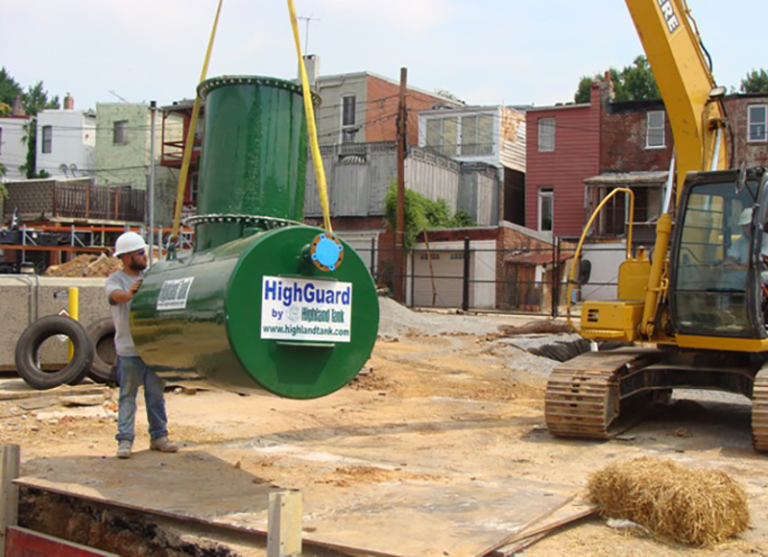Secure Containment of Hospital Decontamination Run-Off
Healthcare workers risk exposure to chemical, biological, radiological, or nuclear (CBRN) materials when their medical facility receives patients contaminated with these substances during incidents such as mass casualty attacks. Such incidents could be associated with man-made (intentional or unintentional) or natural disasters and can involve a wide range of hazardous substances – including chemical weapons agents, toxic industrial chemicals, and dangerous meth and fentanyl drug residue.
Guidance documents, such as the Occupational Safety and Health Administration (OSHA) Best Practices for Hospital-Based First Receivers of Victims from Mass Casualty Incidents Involving the Release of Hazardous Substances, recommends that hospitals with an emergency room should be prepared to decontaminate incoming mass casualty victims. Permanent decontamination facilities are generally recommended because these facilities can be activated quickly, can function well in harsh climates, and offer reliable long-term service, even during a natural disaster. These permanent facilities usually contain decontamination showers as a critical step in the overall decontamination process.
Decontamination wastewater is wastewater generated as a result of decontamination activities performed at medical facilities that may contain CBRN substances.
Wastewater from decontamination showers can contain low-level concentrations of the CBRN substance(s) with which victims are contaminated. Wastewater utilities are required to detect and detain decontamination wastewater containing CBRN substances. Standard protocols for decontamination activities include procedures to prevent runoff of decontamination wastewater and contain it on-site in holding tanks until it can be analyzed and disposed of safely.
HighDRO® Decontamination Wastewater Storage Tanks are required at medical facilities to hold or store wastewater generated because of decontamination activities performed to remove CBRN residue or hazardous materials (HazMat) from equipment or personnel. These “tight” tanks are available for either underground or aboveground installations and are designed to store a wide range of contaminated wastewater.
Applications
• Hospitals
• Military Bases
• Nuclear Energy Centers
• Industrial and Petrochemical Plants
• First Responder Facilities
• Research and Educational Institutions
• Transportation Hubs
Decontamination wastewater storage tanks are watertight and made of double-wall steel to allow for 100% secondary containment and periodic tightness testing.
They are available for either underground or aboveground installations and come complete with tough interior and exterior dielectric coatings. A complete tank leak and level monitoring system is supplied with each tank
for mounting inside the decontamination suite. Accessories include wastewater pumps and controls as well as Highland’s High-LINKTM integrated communication system to enhance security and promote around-the-clock peace-of-mind. Our team at Highland Tank will work with you on your next water storage tank project to help find the right tank for your application.

